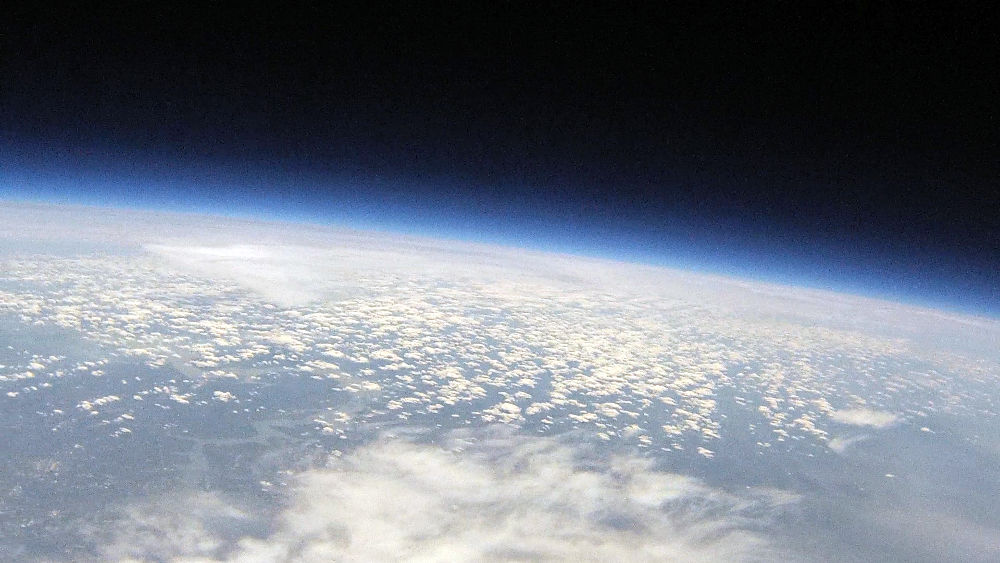HacDC Spaceblimp 7
From HacDC Wiki
Flight Summary
| Date of launch: | Saturday, April 14, 2018 |
|---|---|
| Time of launch: | 11:08 |
| Time of landing: | 14:30 |
| Time of recovery: | ~17:15 |
| Flight duration: | 3:22:00 |
| Peak recorded altitude: | TBD |
| Location of launch: | Strasburg VA, (38 59'48.77"N 78 21'03.27"W) |
| Location of landing: | Manchester MD, (39 40'33.6"N 76 44'03.9"W) |
| Distance (launch to landing): | 98.3 mi, (158.2 km) |
| Balloon type: | 1500 g Kaymont |
| Payload weight: | TBD |
| Balloon lift: | TBD |
| Net lift: | TBD |
Project Description & Status Spaceblimp is an educational and exploratory stratospheric balloon project that lofts various payloads to near-space (about 100,000ft). The sixth launch, Spaceblimp 6, reached 104,000ft. Spaceblimp 7 is being done in collaboration with Rockville Makerspace [1] and Unallocated Space [2].
The March 3-4, 2018 launch was scrubbed due to high winds. The launch took place on Saturday April 14, 2018, at Strasburg VA. The next subsequent launch is expected in late April as part of the Global Space Balloon Challenge where our team name is Hackers SLS (Space Lunch System).
The project has Technical, logistical and Educational goals which are described below. Spaceblimp 7 looks to add new components that weren’t part of HacDC’s previous six Spaceblimp launches. By forming a partnership with several other area makerspaces, volunteers, hackers and educators we are expanding our team and pooling resources. By expanding the project we aim to increase its visibility and benefit all the organizations involved as well as and increase fund-raising opportunities to help sustain all the partners/organizations and the project Spaceblimp in the long-term. This will also expose high school students to educational and technical resources outside of the school environment as well as giving all the participants the opportunity to share skills and interests to work together and learn from one another to achieve shared goals. Local area hackers and space enthusiasts will also benefit by being able to actively participate and develop skills in the design and launch of the payloads. So come and join us!
Project Goals Baseline technical goals are the safe and successful launch, tracking and recovery of a stratospheric balloon and its payloads. These goals involve exploration of concepts of buoyancy, basic electronics and energy storage, triangulation and timekeeping, radio propagation, weather prediction, FAA regulations and stratospheric environment conditions. In addition to these baseline goals, the project will welcome additional technical goals from volunteers and students primarily in the form of payload experiments suggested, designed and built by them. Spaceblimp will encourage use of CubeSat geometry payloads to give students experience with the CubeSat design constraints and to foster discussion with future other CubeSat missions.
The educational objective is primarily to provide an engaging, multi-day hands-on educational experience for students and volunteers heavily focused on STEM. Students will be engaged in a hands-on lesson by disassembling, reassembling and testing the basic tracking module components (GPS, radios) and other payloads. The nature of the balloon flight will naturally lead to discussion of scientific subjects like buoyancy, atmospheric composition and density, radio propagation, weather prediction and technical topics like power consumption and energy storage. Students will have first-hand exposure to a team working environment with delegation of responsibilities and the necessary communication and coordination. Critically, students will be allowed to suggest, design and build their own balloon payloads to be launched into near-space. This kind of self-directed educational approach uses students own natural curiosity and motivation to increase engagement and their sense of ownership of the resulting project.
Logistics Project logistics include those necessary to achieve the technical goals, but also networking of area makerspaces and volunteers, outreach to local governments, funding sources and potential sponsors, coordination of project documentation and public exhibition of the project. This may include informational booths at relevant area events, compilation of video and publication of a project wiki. All new partners (including students) will be able to add or edit our project plan and proposed new topics for the meeting’s agenda.
Points of Contact: HacDC: Enrique C, Technical Manager and Funding POC, enrique@hacdc.org HacDC: Nancy W, Project, Logistics and Student Outreach Manager Rockville RSC: Sam C, Technical Manager Rockville RSC: David D, Logistics and Outreach Manager Unallocated Space: Buddy, Technical and Logistics Manager
Useful Links Working documents on Google Drive: [3]
| spaceblimp@hacdc.org |
| Subscribe to the Spaceblimp email list |

